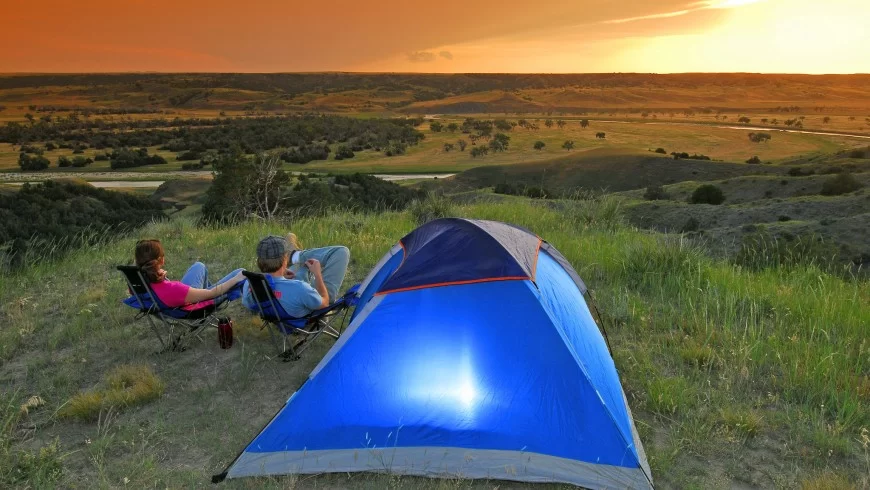- eco-camping-united-states-benefits - What Makes Eco-Camping Special in the United States?
- eco-friendly-practices-sustainable-camping - Essential Eco-Friendly Practices for Sustainable Camping
- real-life-eco-camping-stories-usa - Real-Life Eco-Camping Stories and Unique Destinations
- find-best-eco-camping-experience-pine-cliff-resort - How to Find the Best Eco-Camping Experience in the United States
1. What Makes Eco-Camping Special in the United States?
Eco-camping in the United States has been growing rapidly as travelers become more conscious about their environmental impact. Unlike traditional camping, eco-camping is all about embracing nature while minimizing your ecological footprint. This movement isn’t just a trend—it’s a lifestyle shift, and it’s especially relevant in a country blessed with vast wilderness, national parks, and diverse landscapes.
For many, the draw of eco-camping goes beyond enjoying the serenity of a forest or the majesty of a mountain view. It’s about reconnecting with the land in a way that leaves it better than you found it. For example, instead of leaving behind trash, eco-campers practice Leave No Trace principles, use biodegradable products, and often support local communities by choosing eco-friendly campsites that reinvest in conservation efforts.
In recent years, more and more campgrounds across the United States are upgrading their facilities to meet eco-friendly standards. Solar-powered amenities, composting toilets, and locally sourced building materials are just the beginning. Whether you are an experienced outdoor adventurer or a city-dweller seeking a nature retreat, eco-camping in the United States offers the perfect blend of adventure and sustainability.
2. Essential Eco-Friendly Practices for Sustainable Camping
Practicing sustainability while camping doesn’t have to be complicated. The core of eco-camping lies in mindful choices that benefit both people and the planet. A few fundamental actions can make a big difference:
2.1 Choosing Green Campsites and Gear
Start by picking campsites that prioritize eco-friendly practices. Many locations in the United States now feature energy-efficient lighting, recycling programs, and native landscaping to preserve biodiversity. When it comes to gear, opt for reusable, durable items like stainless steel water bottles and bamboo utensils. Avoid single-use plastics at all costs.
2.2 Respecting Wildlife and Nature
Responsible eco-camping means observing wildlife from a distance and never feeding animals. Stick to marked trails to reduce soil erosion, and always pack out everything you bring in, including food scraps. One well-known incident happened at a national park in California where leftover snacks attracted bears, causing safety hazards for both animals and visitors—this serves as a crucial reminder of why responsible camping matters.
2.3 Reducing Energy and Water Consumption
Use solar-powered chargers for your devices, and try to rely more on natural light. For cooking, consider portable stoves that use clean fuel, or better yet, go for a no-cook meal plan. Many eco-campsites offer rainwater harvesting systems or low-flow showers to help conserve water.
Remember, eco-camping isn’t about perfection—it’s about making intentional choices that lead to real, positive change. Every step counts, and the experience can be just as rewarding as any traditional camping trip, if not more.
3. Real-Life Eco-Camping Stories and Unique Destinations
Stories are what bring the eco-camping movement to life. Take, for instance, the experience of a family from Colorado who embarked on a road trip through the Pacific Northwest. By staying exclusively at eco-certified campgrounds, they not only reduced their waste output but also participated in reforestation workshops and learned about local wildlife protection projects. These hands-on activities made their adventure both educational and memorable.
Another inspiring case involves a group of friends who visited the Smoky Mountains and discovered an off-the-grid campsite managed by a nonprofit organization. This site, surrounded by old-growth forests, ran on wind energy and offered guided hikes about the importance of biodiversity. Such stories highlight how eco-camping in the United States is more than just a getaway—it’s an opportunity to contribute to conservation while creating lasting memories.
3.1 Exploring New Eco-Friendly Hotspots
The United States is full of hidden gems for sustainable camping, from the crystal-clear lakes of Minnesota to the deserts of Utah. Each region offers unique natural beauty and a chance to try new eco-friendly activities, like birdwatching, guided stargazing, or learning primitive survival skills in a low-impact way.
As you plan your next adventure, look for destinations that align with your values. Many eco-campsites publish their environmental policies, so you know exactly how they protect the land and support local ecosystems.
4. How to Find the Best Eco-Camping Experience in the United States
With so many options out there, finding the right eco-camping experience can feel overwhelming. A few tips can help you get started: do some research on campsites’ sustainability practices, read reviews from fellow eco-campers, and look for certifications from trusted environmental organizations. It’s also helpful to consider what kind of landscape or activities excite you most—do you want to wake up to the sound of mountain streams, or would you rather camp under ancient pines?
For those who want a truly unforgettable and sustainable nature retreat, Pine Cliff Resort stands out as a top choice. With a commitment to environmental stewardship, innovative green facilities, and a community of passionate nature lovers, Pine Cliff Resort offers a perfect blend of comfort and ecological responsibility. Whether you’re looking for a weekend escape or a longer adventure, you’ll find eco-friendly options and expert guidance to make your trip both meaningful and memorable.
Eco-camping is about creating positive change and connecting deeply with nature. By choosing places like Pine Cliff Resort, you’re not only treating yourself to an amazing outdoor experience—you’re also supporting efforts to protect our planet for future generations.







